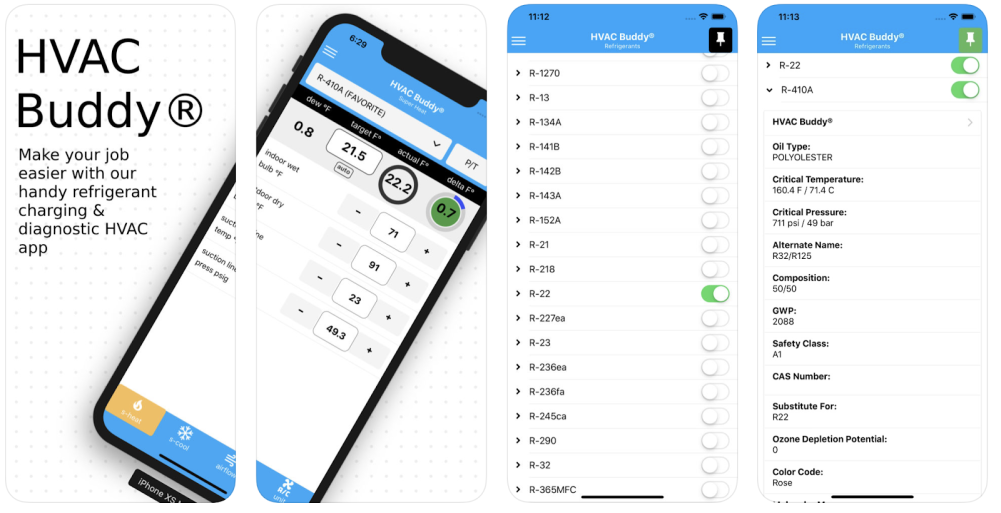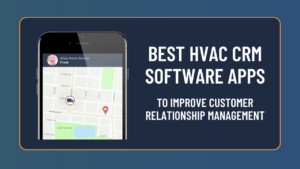Step into the realm of HVAC service apps, where innovation meets convenience. These apps are transforming the way we maintain and manage our heating, ventilation, and air conditioning systems, offering a seamless and efficient experience for both customers and businesses.
From scheduling appointments and tracking maintenance history to accessing expert advice and troubleshooting issues remotely, HVAC service apps are redefining the industry. Join us as we delve into the features, benefits, and future of these groundbreaking tools.
Contents
Features and Functionality of an HVAC Service App

HVAC service apps offer a convenient and efficient way for customers to schedule appointments, request repairs, and monitor their HVAC systems. These apps typically provide a range of features and functionality, including:
Scheduling Appointments
HVAC service apps allow customers to schedule appointments with technicians quickly and easily. They can view available time slots, select the preferred technician, and confirm the appointment with just a few taps.
Requesting Repairs
Customers can use HVAC service apps to request repairs for their HVAC systems. They can provide details about the issue, upload photos or videos, and track the status of their repair request.
Monitoring HVAC Systems
Some HVAC service apps offer features that allow customers to monitor their HVAC systems remotely. They can check the temperature and humidity levels, adjust settings, and receive alerts if there are any problems.
Benefits of Using an HVAC Service App
There are many benefits to using an HVAC service app, both for customers and businesses. For customers, HVAC service apps offer:
- Convenience: Customers can schedule appointments, request repairs, and monitor their HVAC systems from anywhere, at any time.
- Efficiency: HVAC service apps streamline the process of scheduling appointments and requesting repairs, saving customers time and hassle.
- Transparency: Customers can track the status of their appointments and repairs, and view detailed information about their HVAC systems.
For businesses, HVAC service apps offer:
- Increased efficiency: HVAC service apps can help businesses streamline their operations and improve efficiency by automating tasks such as scheduling appointments and dispatching technicians.
- Improved customer satisfaction: HVAC service apps can help businesses improve customer satisfaction by providing customers with a convenient and efficient way to schedule appointments and request repairs.
- Increased revenue: HVAC service apps can help businesses increase revenue by making it easier for customers to schedule appointments and request repairs.
Examples of Successful HVAC Service Apps
There are many successful HVAC service apps available today. Some of the most popular include:
- HVAC-Calc: HVAC-Calc is a comprehensive HVAC service app that provides a wide range of features, including appointment scheduling, repair requests, and system monitoring.
- ServiceTitan: ServiceTitan is a cloud-based HVAC service app that helps businesses manage their operations and improve efficiency.
- CoolEdge: CoolEdge is a mobile HVAC service app that allows customers to schedule appointments, request repairs, and track the status of their repairs.
Developing an HVAC Service App
Developing an HVAC service app requires a structured approach to ensure a successful outcome. This involves understanding the target audience, defining app features and functionality, and selecting the appropriate technologies and frameworks. It’s also essential to design a user-friendly and intuitive app interface to enhance user experience.
Steps Involved in Developing an HVAC Service App
The development process typically includes the following steps:
- Define App Requirements:Determine the target audience, app features, and functionality based on market research and user feedback.
- Choose Technologies and Frameworks:Select suitable programming languages, frameworks, and development tools based on app requirements and performance considerations.
- Design User Interface:Create a user-friendly and intuitive app interface that provides a seamless user experience, considering navigation, layout, and aesthetics.
- Develop App Functionality:Implement the app’s core functionality, including user registration, scheduling appointments, tracking technician availability, and processing payments.
- Test and Debug:Conduct thorough testing to identify and resolve bugs, ensuring app stability and performance across different devices and platforms.
- Deploy and Maintain:Release the app on app stores and monitor its performance, providing regular updates and support to maintain user satisfaction.
Marketing and Promotion of an HVAC Service App
Marketing and promotion are crucial for the success of an HVAC service app. By effectively reaching your target audience and optimizing your app’s visibility, you can attract more users and drive business growth.
Effective Marketing Strategies
- Define Your Target Audience:Identify the specific group of homeowners or businesses most likely to need HVAC services. Consider factors such as age, income, location, and homeownership status.
- Content Marketing:Create valuable content, such as blog posts, articles, and videos, that provide helpful information about HVAC systems and maintenance. Share this content on your website, social media, and other relevant platforms.
- Social Media Marketing:Establish a strong presence on social media platforms where your target audience is active. Share engaging content, run contests, and engage with potential customers.
- Local :Optimize your website and app for local search queries. Use s that homeowners in your service area are likely to use when searching for HVAC services.
- App Store Optimization (ASO):Optimize your app’s listing in app stores to increase its visibility. Use relevant s in your app’s title, description, and screenshots.
- Referral Programs:Offer incentives to existing customers for referring new users to your app. This can help you acquire new customers at a lower cost.
Customer Service and Support for an HVAC Service App
Providing exceptional customer service and support is paramount for the success of an HVAC service app. By establishing clear communication channels and resolving inquiries promptly, businesses can foster customer satisfaction and loyalty.
Communication Channels
Effective customer communication requires a multi-channel approach. Consider integrating the following:
In-app chat
Provides real-time support within the app.
Suitable for detailed inquiries or documentation sharing.
Phone support
Offers direct contact for urgent or complex issues.
Handling Inquiries and Complaints
Anticipate common customer inquiries and develop standardized responses. Train support staff to:
Be empathetic
Understand the customer’s perspective and acknowledge their concerns.
Provide clear information
Explain technical terms in a user-friendly manner.
Resolve issues promptly
Take ownership of the problem and follow up to ensure resolution.For complaints, follow a structured process to:
Acknowledge and apologize
Express regret for the inconvenience caused.
Investigate thoroughly
Gather details to identify the root cause.
Offer a solution
Propose a fair and timely resolution that addresses the customer’s concerns.
Future Trends and Innovations in HVAC Service Apps
The HVAC service app industry is constantly evolving, with new trends and innovations emerging all the time. These advancements are driven by the increasing demand for convenience, efficiency, and personalization in the HVAC service sector.
Here are some of the key trends and innovations that we can expect to see in the future of HVAC service apps:
Integration of Artificial Intelligence
Artificial intelligence (AI) is already being used in a number of ways to improve the HVAC service experience. For example, AI-powered chatbots can provide instant support to customers, answer questions, and schedule appointments. AI can also be used to analyze data and identify trends, which can help HVAC service companies improve their efficiency and effectiveness.
Augmented Reality
Augmented reality (AR) is another technology that is expected to have a major impact on the HVAC service industry. AR can be used to provide technicians with real-time information about the equipment they are working on, as well as to help customers visualize the work that needs to be done.
Predictive Maintenance
Predictive maintenance is a technology that can be used to predict when HVAC equipment is likely to fail. This information can help HVAC service companies schedule maintenance appointments before problems occur, which can save customers time and money.
End of Discussion
As the HVAC industry continues to evolve, so too will the role of service apps. By embracing emerging technologies and staying attuned to customer needs, these apps will become even more indispensable tools for maintaining optimal indoor comfort and air quality.
The future of HVAC service apps holds endless possibilities, promising a seamless and personalized experience that empowers both homeowners and businesses to manage their HVAC systems with ease and efficiency.

